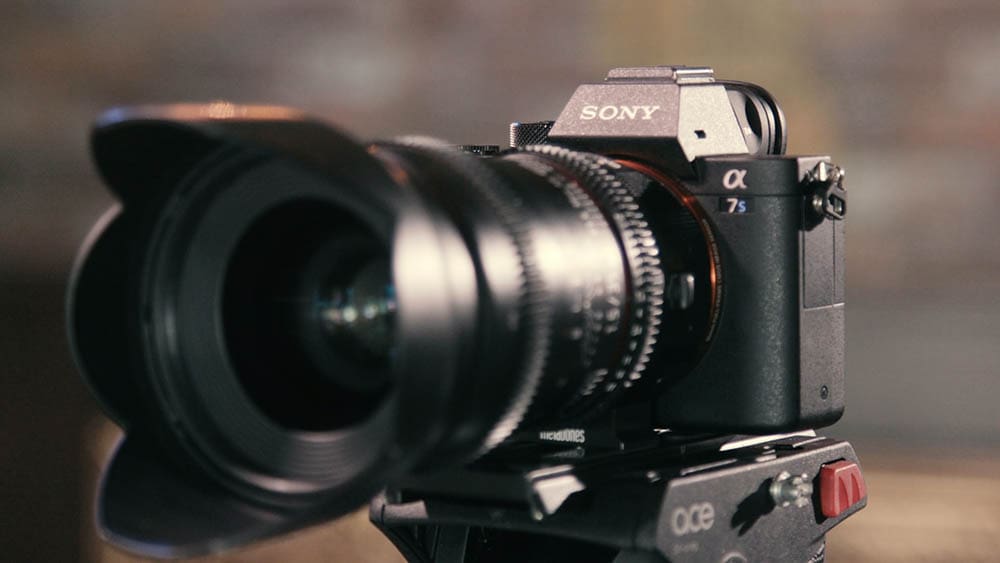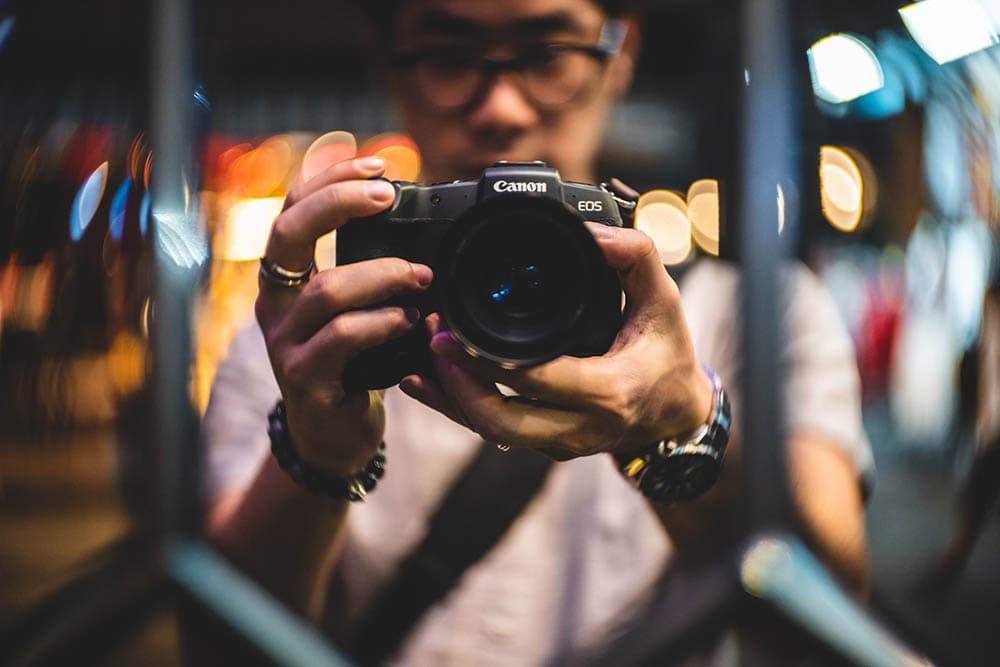What Is a Full-Frame Camera? (Photography Basics Explained)
Last Updated on

The photography world is abuzz with full-frame cameras. But are these cameras worth the extra price? What exactly is a full-frame camera, anyway?
We break it all down for you here, but the truth is that full-frame cameras offer tons of capabilities that other cameras don’t. While they’re more expensive, if you need those features, they might be exactly what you’re looking for.

What Are the Different Types of Full-Frame Cameras?
Since full-frame cameras simply use a different type of camera sensor compared to crop cameras, they come in all the same camera types.
This means you can get a DSLR full-frame camera or a mirrorless full-frame camera. However, since full-frame cameras typically cost more and deliver higher quality results, it’s not common to find full-frame compact or other low-end camera types.
This is especially true when you consider that full-frame cameras use larger sensors, which adds to the overall bulk of the camera. This isn’t a problem for DSLRs and large mirrorless cameras, but for a compact problem, it can be an issue.

How Do They Work?
Most people don’t dive too far into how manufacturers make DSLR and mirrorless cameras, but if you’re looking to understand how a full-frame camera works, it’s essential.
It all comes down to the size of the sensor inside the camera. Full-frame cameras use a 24-mm x 36-mm sensor, which is the same size that 35-mm film uses. This gives you a wider field of view than that of a typical APS-C or Micro Four Thirds camera. For instance, an APS-C camera has a 1.6x-crop factor, while a full-frame camera has no crop factor.
That means if you’re using a 50-mm lens with a 1.6x lens, it’s more like using a 75-mm lens with a full-frame camera regarding the field of view.


Where Are They Used?
Since there are many advantages of full-frame cameras, they are extremely popular among professional photographers. This is especially true considering their high price tag.
Full frame excels in low-light situations or when you want a limited or short field of view. But since it’s often on high-end cameras, the photographer can usually change the settings to get high-quality photos of just about anything!

Advantages of Full-Frame Cameras
Full-frame cameras have many advantages compared to APS-C, Micro Four Thirds, and other types of crop cameras. The most notable advantage is the wide field of view. You can simply capture a larger area in relation to the lens that you’re using with a full-frame camera.
The second most notable advantage comes down to the quality of the photos. By photographing a larger area, they improve the photo’s resolution, which enables you to print photos at large sizes without pixelation.
Furthermore, full-frame cameras do a great job in both high-light and low-light situations. This enables them to capture high-quality photographs in just about any conditions.
Finally, full-frame cameras allow for a much shallower depth of field. If you’re trying to capture a photo of something close to you, a full-frame camera helps quite a bit.


Disadvantages of Full-Frame Cameras
While there are tons of advantages to full-frame cameras, they’re not perfect. The first disadvantage is the high price tag. They’re expensive, so if you’re on a tight budget, you may not be able to get your hands on one.
Second, full-frame cameras tend to be a bit larger than cameras that use crop sensors. The reason for this all comes down to the physical size of the sensor. Full-frame cameras require a large sensor, which means you need a large lens assembly to house them.
Also, when you’re trying to capture an image where everything in both the foreground and background is crisp, crop cameras generally have a small advantage there.
Finally, full-frame cameras take photos with more megapixels, which means each file size is larger. Have enough files like this, and you quickly need more cloud storage or a device with a larger storage capacity to hold all the images.

Frequently Asked Questions
There’s so much information out there about full-frame cameras, which can lead to a few questions. That’s why we wanted to address the most frequently asked ones here.
Is a Full-Frame Camera Better?
In just about every situation, a full-frame camera is better than a crop camera. You get a wide field of view, a versatile shooting range, and high-quality photos. All these advantages make it the camera of choice for most professionals.
How Do You Know If a Camera Is Full-Frame?
While we’d love to tell you that there’s an easy way to tell if a camera is full frame or not, the truth is that it comes down to the manufacturer and the specific specs of the camera.
So, unless you can visually tell the difference in the field of view and quality of photos because you have experience using both, you’ll typically need to dig into the camera’s specifications from the manufacturer to figure out what kind of sensor is inside it.
Is DSLR or Mirrorless Camera Better?
Since you can a full frame in both a DSLR and a mirrorless camera, that naturally leads people to wonder which one is better. For most situations, a mirrorless camera will outperform a DSLR camera, but it’s more expensive.
A mirrorless camera has a quicker aperture speed, so it can record or capture images of moving objects with much better quality than a DSLR camera.


A Quick Reference Guide
- When you need a wide field of view
- When you need high-quality images
- In low-light situations
- If you need a shallow depth of field
- When you’re on a tight budget
- If you need a deep depth of field
- If you want a small camera
- When you want small file sizes

Conclusion
If you’re considering a full-frame camera and can afford the high price tag, chances are that you’re going to appreciate the extra abilities and quality that it offers. These cameras are expensive, but there’s a reason that they’re the go-to choice for professional photographers.
Just know what you’re getting and where they excel, so you don’t end up overpaying for features that you don’t need and won’t use!
Featured Image Credit: ShareGrid, Unsplash
About the Author Robert Sparks
Robert’s obsession with all things optical started early in life, when his optician father would bring home prototypes for Robert to play with. Nowadays, Robert is dedicated to helping others find the right optics for their needs. His hobbies include astronomy, astrophysics, and model building. Originally from Newark, NJ, he resides in Santa Fe, New Mexico, where the nighttime skies are filled with glittering stars.
Related Articles:
What Is the Best Binocular Magnification for Hunting? Optical Features Explained
How to Clean a Refractor Telescope: Step-by-Step Guide
How to Clean a Telescope Eyepiece: Step-by-Step Guide
How to Clean a Rifle Scope: 8 Expert Tips
Monocular vs Telescope: Differences Explained (With Pictures)
What Is a Monocular Used For? 8 Common Functions
How to Clean a Telescope Mirror: 8 Expert Tips
Brightfield vs Phase Contrast Microscopy: The Differences Explained
